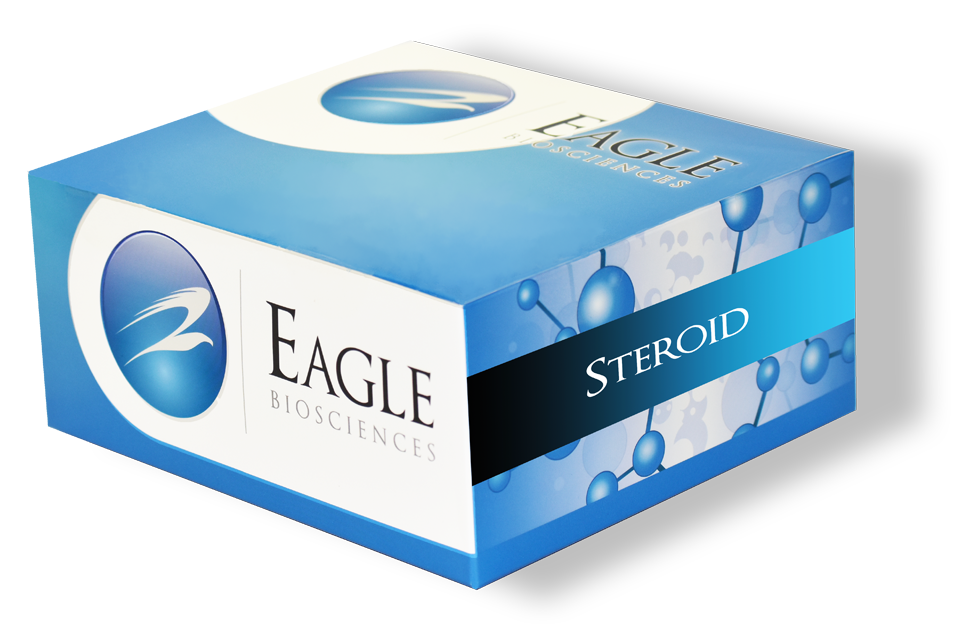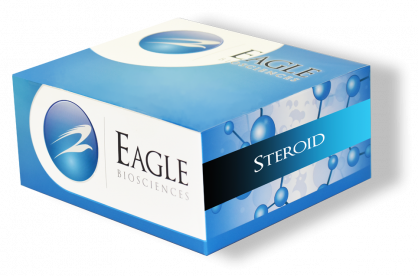DHEA-S ELISA Assay Kit
DHEA-S ELISA Assay Kit is for research use only
Size: 1×96 wells
Sensitivity: 0.005 μg/mL
Dynamic Range: 0.005–10 μg/mL
Incubation Time: 65 minutes
Sample Type: Serum
Sample Size: 25 µL
Controls Included
SPECIMEN COLLECTION AND STORAGE for DHEA-S ELISA
Approximately 0.1 mL of serum is required per duplicate determination in this DHEA-S Assay. Collect 4–5 mL of blood into an appropriately labelled tube and allow it to clot. Centrifuge and carefully remove the serum layer. Store at 4°C for up to 24 hours or at -10°C or lower if the analyses are to be done at a later date. Consider all human specimens as possible biohazardous materials and take appropriate precautions when handling.
Specificity (Cross Reactivity)
The following compounds were tested for cross-reactivity with the DHEA-S ELISA Assay kit with DHEA-S cross-reacting at 100%:
DHEAS 100%
Androsterone 16.0%
Androstenedione 1.7%
Testosterone 0.9%
Progesterone 0.6%
DHT 0.6%
Cortisol 0.5%
The following steroids were tested but cross-reacted at less than 0.001% for this DHEA-S ELISA: 17β-Estradiol, Estrone, Estrone-Sulfate and Pregnenolone.
Assay Principle for Dehydrospiandrosterone Sulfate ELISA Assay
The DHEA-S ELISA Assay Kit follows the typical competitive binding scenario. Competition occurs between an unlabelled antigen (present in standards, controls and patient samples) and an enzyme-labelled antigen (conjugate) for a limited number of antibody binding sites on the microplate. The washing and decanting procedures remove unbound materials. After the washing step, the enzyme substrate is added. The enzymatic reaction is terminated by addition of the stopping solution. The absorbance is measured on a microtiter plate reader. The intensity of the colour formed is inversely proportional to the concentration of DHEAS in the sample. A set of standards is used to plot a standard curve from which the amount of DHEAS in patient samples and controls can be directly read.



